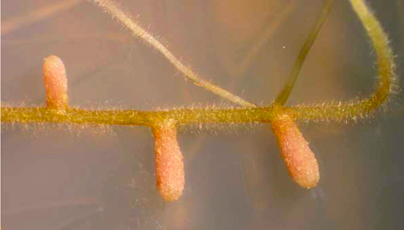Nitrogen is a crucial element for plant growth and makes up nearly 80 percent of the Earth’s atmosphere. Unfortunately plants can’t use atmospheric nitrogen unless it is converted into another form. Fertilizers can supply the needed nitrogen, but they are made using processes that contribute to the amount of greenhouse gases in the atmosphere. On the other hand, symbiotic nitrogen fixation done by bacteria such as Rhizobia residing in the soil or in the roots of plants bypasses the need for nitrogen fertilizers and allows farmers to plant crops in marginal lands that might not normally be used as such. Symbiotic nitrogen fixation contributes some 90 million tons of fixed nitrogen annually for legume crops such as soybeans, red clover and peas. S meliloti is a symbiotic nitrogen-fixing bacterium from the Rhizobia family often associated with crops such as alfalfa. Sequencing S. meliloti would provide researchers with more information on a molecular level of nitrogen fixation, symbiosis and how Rhizobia evolved.

Photo: Sinorhizobium nodules in alfalfa roots, courtesy of A. Becker & E.G. Biondi, University of Florence
Principal Investigators: Emanuele Biondi (University of Florence)
Program: CSP 2009